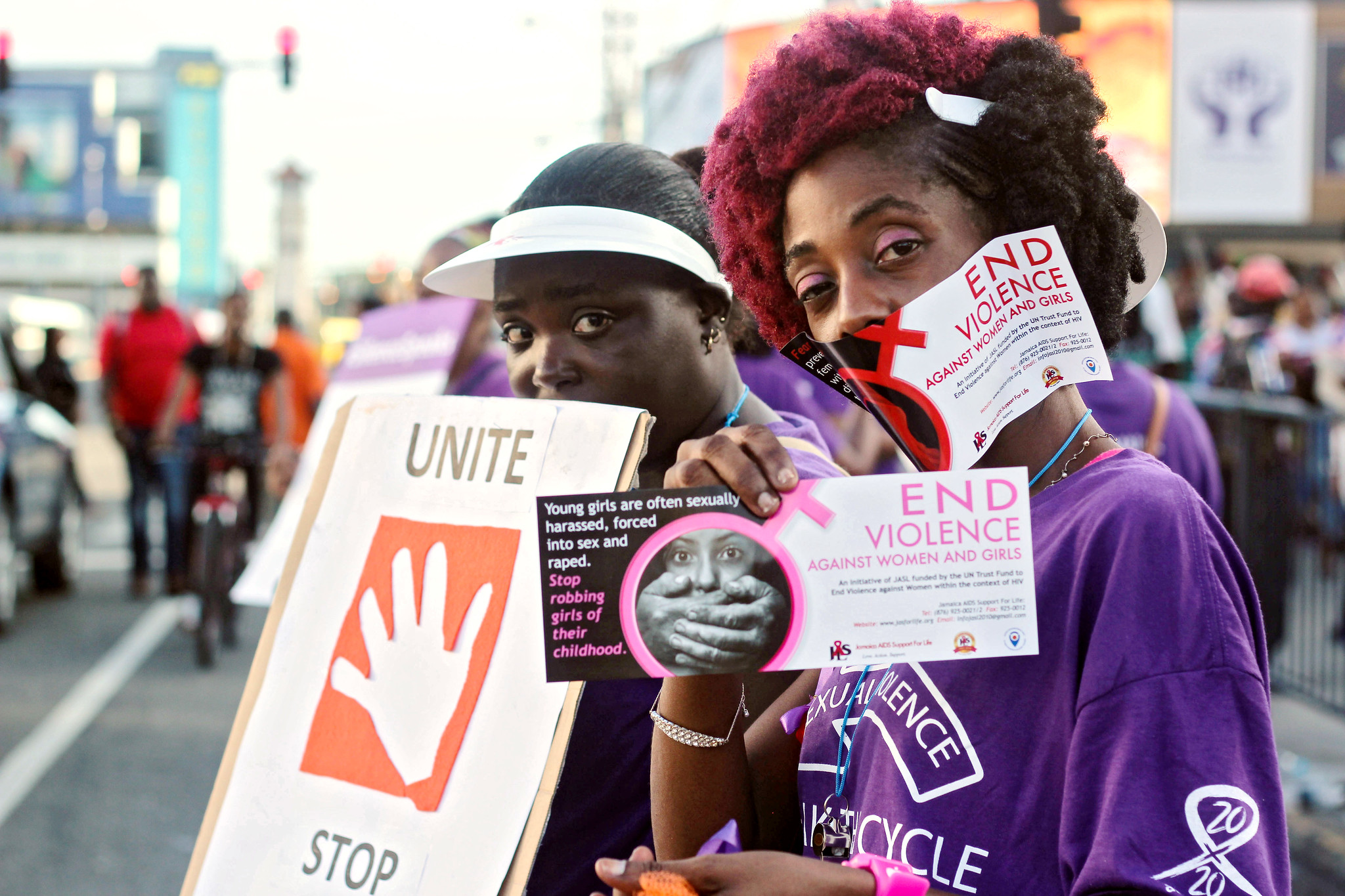11 July 2021, the finale of the European Football Championship took place. For Italian supporters it was a joyful evening, for England supports less so; but for victims of domestic violence, it was a miserable night. While the tournament as a whole had already displayed a significant spike in domestic abuse against women in England, earlier studies had shown the rise in abuse following England’s football matches: 26 percent in the case of a win or draw and 38 percent in lost matches.[1]
While the aforementioned statistics are in itself horrifying, violence against women is not only limited to domestic abuse. This type of violence also includes violence coming from the intimate partner, harassment and sexual violence, female genital mutilation, human trafficking and child marriage.[2] Definitions of violence against women can be found in legal instruments like the UN Declaration on the Elimination of Violence Against Women, Belém do Pará Convention, the Istanbul Convention or the Maputo Protocol. These international legal instruments were designed to protect women across the world, however, the pandemic has proven their inability to sufficiently do so. In the course of the pandemic, several reports and released data have shown that violence against women, specifically domestic violence, has been growing since the beginning of the COVID-19 outbreak. These reports have proven to governments and citizens worldwide that the fight against this type of violence is far from over and, more importantly, these reports have exposed the dark side of the pandemic.
Even before the pandemic, WHO reports exposed the problem of sexual violence, with almost one in three women having experienced physical and/or sexual violence, often coming from their intimate partner, or sexual violence coming from their non-partner. At the same time, more than 25% of women between 15 and 49 years of age who are in a relationship have experienced partner violence at least once throughout their life. To add to that, 38% of murdered women were murdered by their intimate partner.[3] If the (growing) violence is not enough to call for action, in past years several countries have expressed their plans to renounce or withdraw from the international legal instruments they had signed, and Turkey even officially withdrew from the Istanbul Convention on its 10-year anniversary.[4]
Besides the cruelties these women have to endure during the violent attacks themselves, the implications and future consequences of these acts must not be underestimated. Women victim to violence coming from their intimate partner are threatened in their psychological and physical health and their work capacity to social functioning are damaged. Moreover, these women are often being forced into inferior positions if they are unable to work.[5] Other issues stemming from violence against women include the loss of the capacity to effectively take care of themselves and their children, isolation or even health consequences like e.g. (fatal) injuries, anxiety disorders and depression, miscarriages for pregnant women or substance abuse.[6]
With yesterday’s International Day for the Elimination of Violence against Women, it is even more important to look at the possibilities in which violence against women can be prevented and eliminated. Many reports by organisations like the UN, WHO or Global Rights for Women endorse the idea of renewed legislation aiming to protect women and girls. The current international legislation has a strong regional focus and consequently leaves out a large number of women worldwide. To tackle this problem, initiatives have been taken to draw up a global treaty: the Global Treaty to end Violence Against Women and Girls.[7] While the draft[8] still has a long journey before it could ultimately be ratified, it is huge step in the right direction. Besides a global treaty, national laws should be revised and adapted to include effective and extensive protection laws preventing violence against women. These laws could contain e.g. expanded liability for domestic violence crimes, criminalisation of martial rape[9] or the inclusion of protection orders.
Besides the implementation of new legislation protecting women and girls, non-governmental organisations, activists, and civic society groups fighting for women’s rights should be supported in any way possible. Funding of activities and research performed by these groups, support of campaigns by women’s rights activists and organisations or the establishment of partnerships between such organisations and national governments are just examples of support from which all women could benefit. I would like to end this article with a call on all our member organisations to raise awareness, (if possible) support activists and organisations or even start your own campaign to help women and girls in need. Violence against women has always been a dangerous and terrifying problem and the pandemic has demonstrated the need for immediate action.
[1] IFLRY Resolution “The dark side of the pandemic: Gender-based and sexual violence against women” (JOVD, 2021)
[1] Serina Sandhu, “Euro 2020: Domestic abuse spikes in England with 400 extra case reported during football tournament,” I News, (July 13, 2021) accessed 17 November 2021, https://inews.co.uk/news/uk/euro-2020-domestic-abuse-england-increase-cases-during-football-tournament-1100995
[2] UN, “International Day for the Elimination of Violence against Women 25 November” accessed 17 November 2021, https://www.un.org/en/observances/ending-violence-against-women-day
[3] WHO, “Violence against women” accessed 20 November 2021, https://www.who.int/news-room/fact-sheets/detail/violence-against-women
[4] — “Istanbul Convention: Turkey officially withdraws from treaty protecting women” Euronews (1 July 2021) accessed 17 November 2021, https://www.euronews.com/2021/07/01/istanbul-convention-turkey-officially-withdraws-from-treaty-protecting-women
[5] Alena Sakhonchik, Isabel Santagostino Recavarren & Paula Tavares, “Closing the Gap – Improving Laws Protecting Women from Violence” World Bank Group, accessed 20 November 2021, https://documents1.worldbank.org/curated/en/180811501135102564/pdf/117707-ENGLISH-Closing-the-Gap-Improving-Laws-Protecting-Women-from-Violence-PUBLIC.pdf
[6] WHO, “Violence against women” accessed 20 November 2021, https://www.who.int/news-room/fact-sheets/detail/violence-against-women
[7] –,“Women’s Rights Activists from 128 Countries Release Global Treaty to End Violence Against Women and Girls” Every Women Treaty (16 November 2021) accessed 20 November 2021, https://everywoman.org/drafttreaty/
[8] –, “First Draft – Convention on Eliminating Violence Against Women and Girls” accessed 20 November 2021, https://everywoman.org/wp-content/uploads/2021/11/Full-First-Draft-Treaty.pdf
[9] For countries who have not yet criminalized martial rape.

